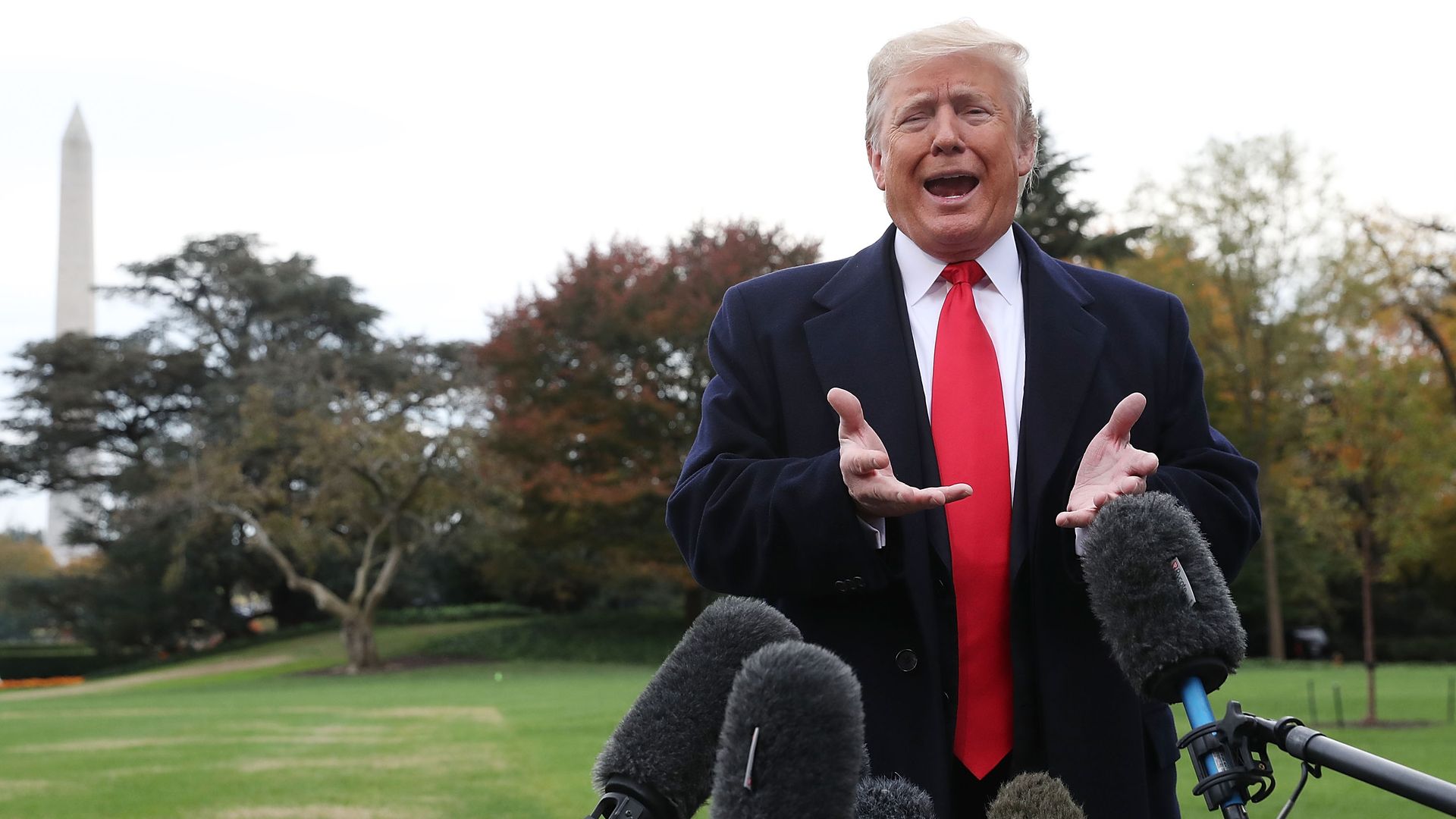
President Trump walked back comments on Friday about the military engaging with migrants who throw rocks at them, saying there aren't plans to fire at people at the border, instead to arrest them.
The big picture: What Trump originally said about the military considering rocks "a firearm because there's not much difference," prompted backlash and questioning regarding the military's authorized use of force in similar situations. The military's rules allow its members to act in self-defense, but typically "proportional" to the hostility they're facing.
Military rules of self-defense
An internal Pentagon memo obtained by the Washington Post says that troops are authorized to use deadly force in defense of "all persons, foreign or domestic, who are faced with imminent threat of death or serious bodily harm, and where lesser means have failed or cannot be reasonably employed."
- According to the rules of engagement (ROE), responses from the military must be "proportional to the provocation," and that force "must be reasonable in nature, duration, and scope to the perceived or demonstrated threat."
- And the rule of the use of force (RUF) authorizes military personnel to "exercise individual self-defense in response to a hostile act or demonstrated hostile intent."
Troop activities are limited by law
The Posse Comitatus Act of 1878 restricts the U.S. military from acting as law enforcement on U.S. soil.
- This means troops will not be authorized to "detain immigrants, seize drugs from smugglers or have any direct involvement in stopping" the migrant caravan, the Military Times reports. Instead, troops will "largely mirror that of the existing National Guard" already at the border.
Customs and Border Patrol
CBP, however, appears to have slightly more leeway in what constitutes the application of deadly force. CBP did not initially respond to request for comment. ...
- In the 2014 Guidelines and Procedures Handbook, it says CBP officers and agents "may use deadly force only when necessary...when the officer/agent has a reasonable belief that the subject of such force poses an imminent danger or serious physical injury or death."
- They define "serious physical injury" as something which "creates a substantial risk of death or which causes serious disfigurement, serious impairment of health...or involved serious concussive impact to the head."

